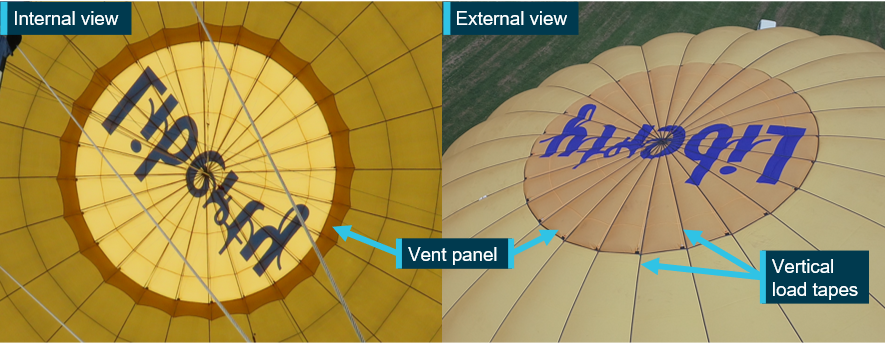
|
Key points:
|
The Australian Transport Safety Bureau has provided an update on its ongoing investigation into the collision of a hot air balloon, with 13 passengers and a pilot on board, with buildings in suburban Melbourne.
The interim report details evidence gathered so far in the ATSB’s investigation. It contains no analysis or findings, which will be detailed in the investigation’s final report.
The balloon had departed from Royal Park on the morning of 20 April 2022, for an intended destination of Moorabbin Airport.
“Passenger photos showed the vent panel, designed to control the release of air from the top of the balloon was almost, or already, pushing through its opening at normal operating temperatures,” ATSB Director Transport Safety Stuart Macleod said.
About 10 minutes into the flight, the pilot noticed a gap between the panel and the edge of its vent aperture. The pilot was unable to seal it using the deflation system lines.
“As the flight progressed, the gap between the vent aperture and the vent panel expanded and altitude control became increasingly difficult,” Mr Macleod said.
After an unsuccessful attempt to land in Fawkner Park, the pilot tracked the balloon to the south with the intent to land at Elwood Beach. Before reaching the beach, however, with the pilot unable to maintain altitude, the balloon would land outside the entrance of an apartment building in Elwood.
Three passengers sustained minor injuries.
The interim report notes the accident flight was the balloon’s first since manufacture, and that prior to its manufacture in 2021, the balloon’s operator requested a larger vent (both the vent aperture and panel) to increase the balloon’s descent performance.
As such, the incident balloon was the only one of its kind with the modified vent design produced by the manufacturer.
Following the incident, the ATSB arranged for the balloon’s deflation system to be tested. During that testing, the balloon was tethered to the ground and its envelope inflated.
“During the test, at an internal envelope temperature of about 90 °C, which was below the maximum allowable temperature of 124 °C, edges of the vent panel between the vertical load tapes pushed up through the aperture creating many gaps for internal envelope air to vent out,” Mr Macleod noted.
“Attempts to seal the gaps using the parachute vent line and white line were unsuccessful, and at higher temperatures, the gaps became larger and more numerous.”
According to the pilot of the incident flight, who witnessed the testing, and an analysis of passenger video, the vent gaps were very similar to those observed during the incident flight.
Mr Macleod noted that as the investigation continues the ATSB will examine the balloon manufacturer’s processes and procedures for modifying the balloon’s design, and the balloon’s acceptance into service.
A final report will be released at the conclusion of the investigation.
“However, should a critical safety issue be identified during the course of the investigation, the ATSB will immediately notify relevant parties so appropriate and timely safety action can be taken.”
Read the interim report: Collision with terrain involving Kubicek Balloons BB78Z, VH‑RJR, Elwood, Victoria on 20 April 2022


